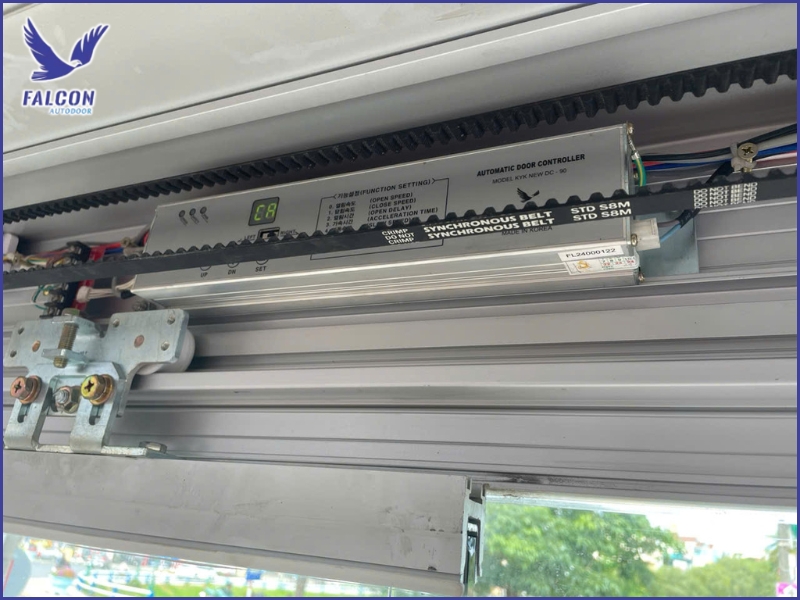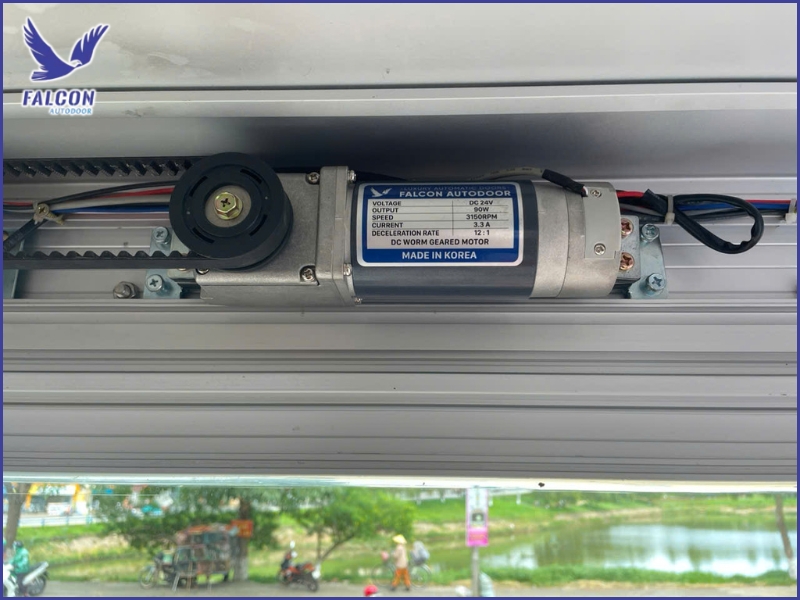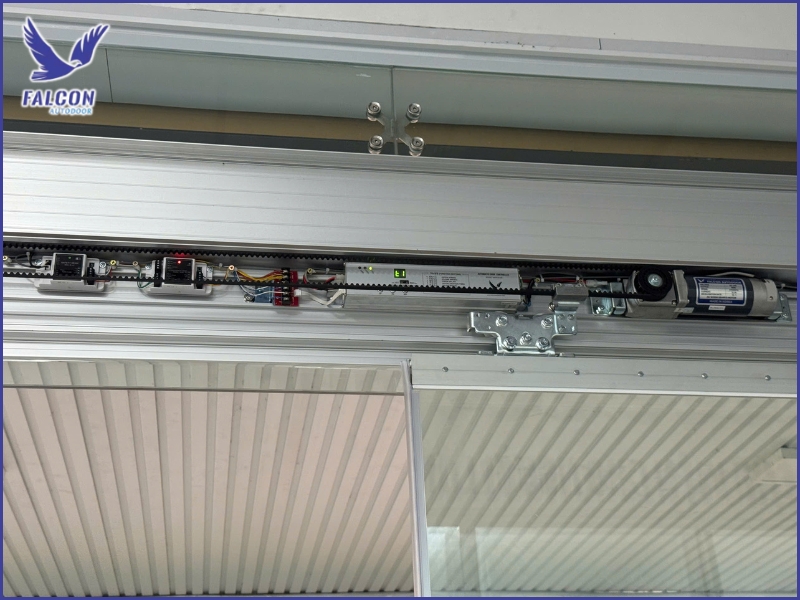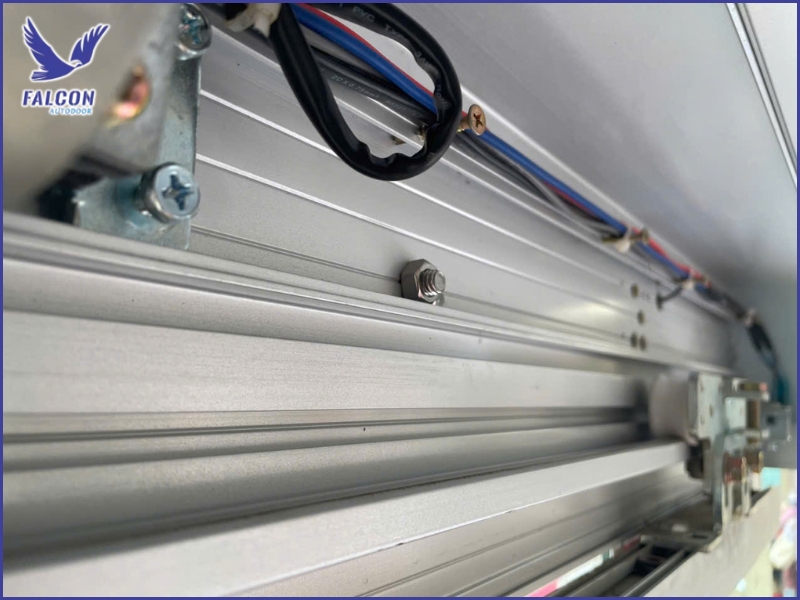When should you replace automatic door accessories?
During daily use, many owners focus on the motor and overlook the critical role of accessories. To help, Thuy Linh Long highlights the warning signs and ideal replacement windows so your automatic doors stay smooth, durable, and safe throughout their lifecycle.
1. The importance of accessories in automatic doors
Accessories are the backbone of smooth, stable operation. From motors and sensors to tracks, rollers, and control boards, each piece has a distinct job. If any single component underperforms, the entire system can suffer causing jams, misalignment, noise, or unsafe behavior at the entrance.
1.1 Roles of key accessories
The motor provides motion, sensors detect approaching users, and tracks, rollers, and the controller coordinate movement. When these parts are well matched, the door opens and closes accurately and quietly. Proper synergy reduces mechanical stress, cuts noise, and maintains consistent travel speed.
1.2 How accessories affect service life
High-quality, brand-matched accessories extend the system’s lifespan by keeping torque, friction, and vibration within design limits. Low-grade parts wear quickly and pass extra load to the motor and controller. Over time, that cascade accelerates failures and increases unplanned downtime.
1.3 Why timely replacement matters
As accessories degrade, the motor works harder, drawing more current and running hotter. That raises electricity use and the risk of sudden stoppage. Replacing parts on schedule restores balance and keeps safety features responsive, preventing minor wear from becoming major failures.

2. Signs it is time to replace door accessories
After months or years of service, wear becomes visible in motors, sensors, tracks, and rollers. Spotting these symptoms early allows proactive part swaps that prevent abrupt outages. The result is steadier operation, fewer urgent callouts, and lower lifecycle cost for the entrance.
2.1 Slow travel or mid-stroke stalling
If the door moves slower than usual or halts mid-travel, suspect worn rollers, contaminated tracks, or a weakening drive. These faults increase friction and trigger motor protection. Early inspection and targeted replacement restore rated speed and reduce stress on the system.
2.2 Unusual noise or vibration
Squeals, grinding, or shuddering often point to worn bearings, flat-spotted rollers, or track damage. Continued use can bend rails and loosen fasteners. Swapping fatigued parts and re-aligning the leaf eliminates resonance, protects the motor, and brings back quiet operation.
2.3 Inconsistent sensor response
Missed detections, delayed opening, or repeated false triggers indicate tired sensors or signal interference. Users may experience surprise closings or needless cycling. New, properly aimed sensors reestablish fast, safe detection and stabilize door behavior in changing light and airflow.
2.4 Erratic controller or motor behavior
Intermittent non-response despite good power suggests aging control boards, oxidized connectors, or a motor near end-of-life. Random resets or fault codes are common precursors. Component testing followed by board or drive replacement prevents complete shutdowns during peak hours.

3. Recommended replacement timelines for major parts
Replacing accessories on time keeps efficiency high and avoids domino-effect damage. Actual intervals depend on traffic and environment, but planned refreshes reduce surprises. Use the guidance below as a baseline and adjust it with real usage data from your site and service logs.
3.1 Automatic door motor
The motor is the hardest-working component and wears steadily under load. Inspect every six months, checking temperature, noise, and current draw. Typical replacement falls in the 5–7 year range, sooner if overheating, reduced torque, or abnormal sound appears under normal operation.
3.2 Presence and safety sensors
Most sensors last around two to three years, shorter outdoors where dust, heat, and glare accelerate aging. Symptoms include missed detections or phantom triggers. Replacement restores reliable activation and anti-pinch protection, a key safety layer for public entrances.
3.3 Tracks, rollers, and bearings
These mechanical parts carry the door’s weight and determine how quietly it moves. Clean and lubricate quarterly; replace around the two-year mark or at the first signs of squeal, wobble, or visible wear. Fresh rolling gear cuts friction and protects the motor from overload.
3.4 Control board and central controller
Controller lifespan averages about five years, but heavy-duty cycles, dust, and humidity shorten it. If resets fail to clear random faults or signal loss, schedule board diagnostics and replacement. A healthy controller keeps speeds calibrated and safety logic responsive.

4. Benefits of replacing parts at the right time
Timed replacements stabilize performance and safety while lowering ownership cost. Waiting for a breakdown often multiplies damage and downtime. Planned swaps let you schedule work off-peak, keep warranties intact, and maintain a consistently positive user experience at the door.
4.1 Stable, safe daily operation
Fresh, matched parts return the door to smooth, predictable travel with accurate stops and quick detection. That prevents jams and sudden halts that could startle users. It also ensures safety sensors react instantly, protecting children, elderly users, and mobility aids.
4.2 Longer overall system lifespan
When one worn part is left in service, other components absorb the extra load and wear faster. Replacing weak links restores balance across the mechanism. This reduces thermal stress on the motor and controller and preserves tracks and rollers from premature damage.
4.3 Lower maintenance and repair costs
Routine, low-cost replacements avert major failures that demand expensive assemblies. Using genuine, brand-compatible parts improves efficiency and reduces callouts. Over a multi-year horizon, planned maintenance consistently beats reactive fixes on both cost and uptime.

Replacing accessories at the right time keeps your automatic doors quiet, safe, and economical to run. If your system shows any of the symptoms above, contact Thuy Linh Long for inspection, advice, and genuine Falcon parts with fast installation, clear warranty, and competitive pricing.
THUY LINH LONG SERVICES TRADING COMPANY LIMITED
DISTRIBUTOR
Address: 243D Vuon Lai Street, Phu Tho Hoa Ward, Tan Phu District,
Ho Chi Minh City, Vietnam.
Tel: +84 28 22497999
E-mail: cuatudong24h@gmail.com
SUPPLIER
KUM YANG MATERIALS CO.,LTD
Address: 124-60, Myeongdong-ro, Hallim-myeon,
Gimhae-si, Gyeongsangnam-do, 50851, Korea.
Tel: 82-55-345-8380










